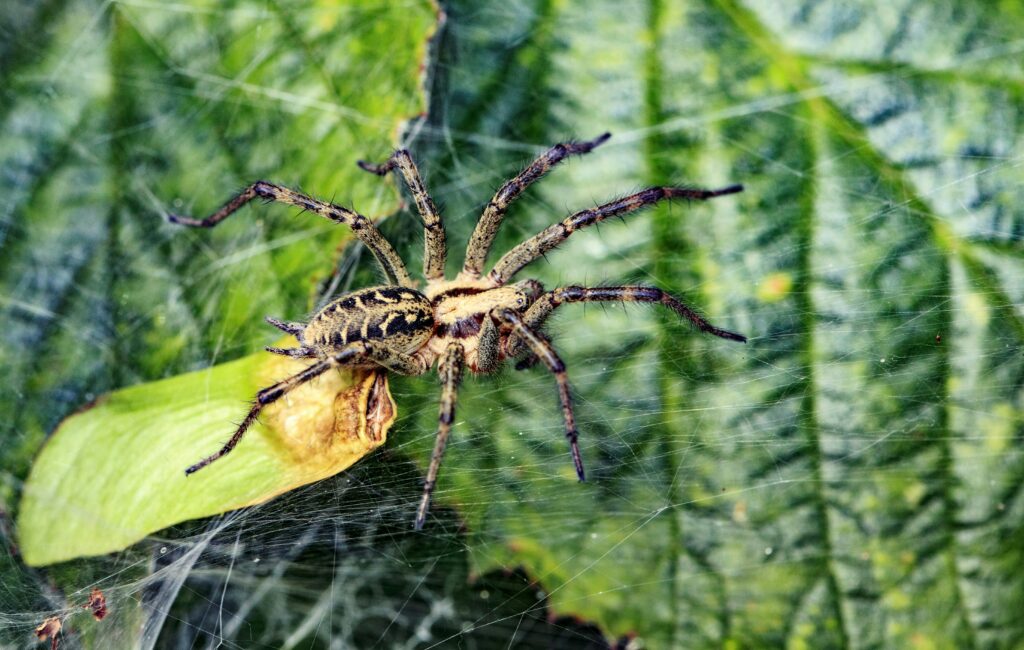In the vast tapestry of Earth’s ecosystems, few creatures demonstrate resilience quite like non-venomous spiders. These remarkable arachnids have conquered virtually every habitat on our planet, from scorching deserts to frozen tundras, high mountain peaks to humid rainforests. Unlike their venomous counterparts, which often rely on potent toxins for hunting and defense, non-venomous spiders have developed fascinating alternative strategies to thrive in Earth’s most challenging environments. Their evolutionary success story is one of physiological adaptation, behavioral ingenuity, and ecological versatility. This exploration of how these eight-legged survivors manage life in extreme climates reveals nature’s endless capacity for problem-solving and the remarkable adaptability that has allowed spiders to become one of the most successful animal groups on Earth.
Physiological Adaptations to Desert Heat

Non-venomous spiders inhabiting desert environments have evolved remarkable physiological adaptations to withstand extreme heat and dehydration. Many desert-dwelling species have developed specialized epicuticular waxes on their exoskeletons that create an effective moisture barrier, dramatically reducing water loss through their body surface. Their metabolic processes have evolved to require minimal water, with some species able to extract sufficient moisture from their prey alone, eliminating the need for drinking water. Desert spiders often possess longer legs that elevate their bodies further from hot sand surfaces, creating a crucial buffer zone against ground temperatures that can exceed 70°C (158°F). Additionally, many have developed lighter coloration or reflective body surfaces that minimize heat absorption, functioning similarly to how light-colored clothing helps humans stay cooler in hot weather.
Cold Climate Survival Strategies

In stark contrast to their desert counterparts, non-venomous spiders in arctic and subarctic regions have developed specialized cold-hardiness mechanisms. Many cold-climate species produce natural antifreeze compounds like glycerol and other cryoprotectants that prevent ice crystal formation within their cells, which would otherwise cause lethal damage. Some spiders can survive being partially frozen, entering a state of suspended animation called diapause during winter months, with their metabolic processes slowing to near-standstill to conserve energy. Arctic wolf spiders (Lycosidae) have developed specialized “thermal windows” in their exoskeletons that can capture solar radiation even in freezing temperatures. Their bodies also feature increased setae (hair-like structures) that create insulating air pockets, functioning much like the fur of mammals to retain body heat in frigid conditions.
High-Altitude Adaptation Mechanisms

Non-venomous spiders found at high elevations face challenges including intense UV radiation, low oxygen levels, extreme temperature fluctuations, and harsh winds. Species like the Himalayan jumping spider (Euophrys omnisuperstes) have been documented at elevations exceeding 6,700 meters (22,000 feet), displaying remarkable respiratory adaptations including specialized book lungs that extract oxygen more efficiently from thin air. Their hemolymph (spider blood) often contains higher concentrations of hemocyanin, a copper-based respiratory protein that improves oxygen binding capacity at high altitudes. High-altitude spiders typically have more compact body shapes with shorter appendages to minimize heat loss, alongside darker pigmentation that aids in absorbing limited thermal energy. Many have also developed specialized web structures that withstand powerful mountain winds, often building more robust anchor points and using shorter, stronger silk strands.
Rainforest Humidity Adaptations
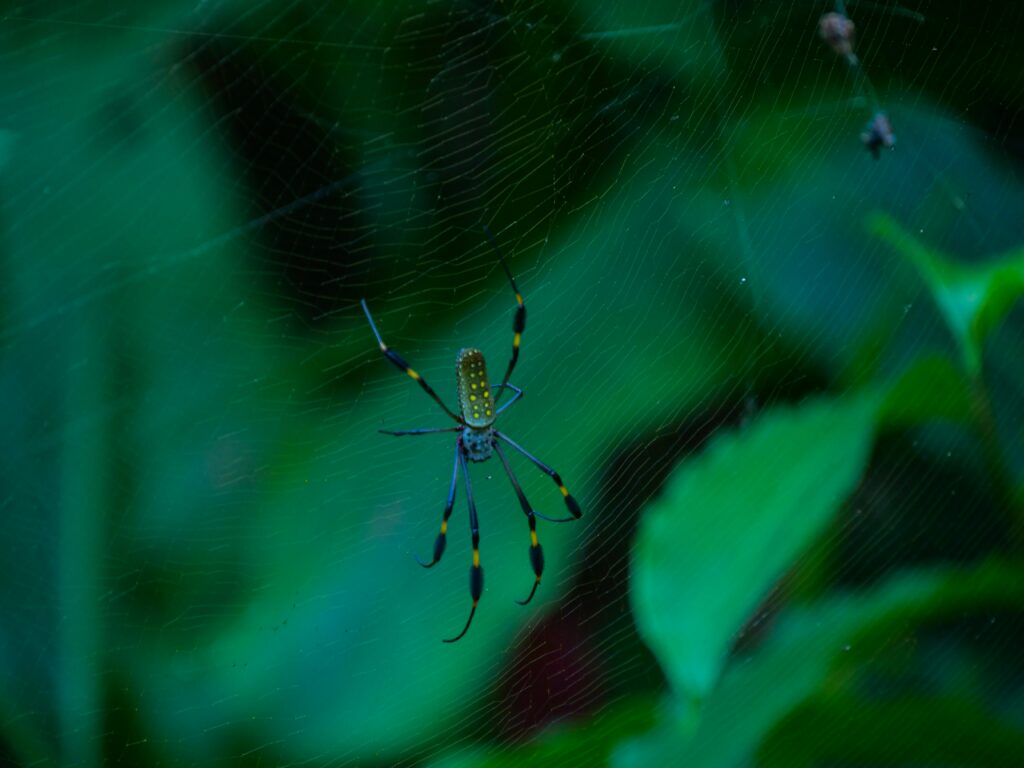
In the perpetually humid environments of tropical rainforests, non-venomous spiders face challenges related to excess moisture, fungal infections, and intense competition. Many rainforest spiders have evolved hydrophobic (water-repelling) body surfaces that prevent water droplets from adhering to their exoskeletons, which could otherwise impede movement or facilitate fungal growth. Their respiratory systems often include specialized structures that prevent drowning during heavy downpours, with some species able to create air bubbles around their book lungs. Some non-venomous rainforest spiders possess elaborate drainage systems in their webs that channel rainwater away from the central structure, preserving the web’s integrity during torrential rains. Additionally, many tropical species have developed antimicrobial compounds in their cuticles that inhibit the growth of pathogenic fungi and bacteria thriving in humid conditions.
Behavioral Thermoregulation Techniques
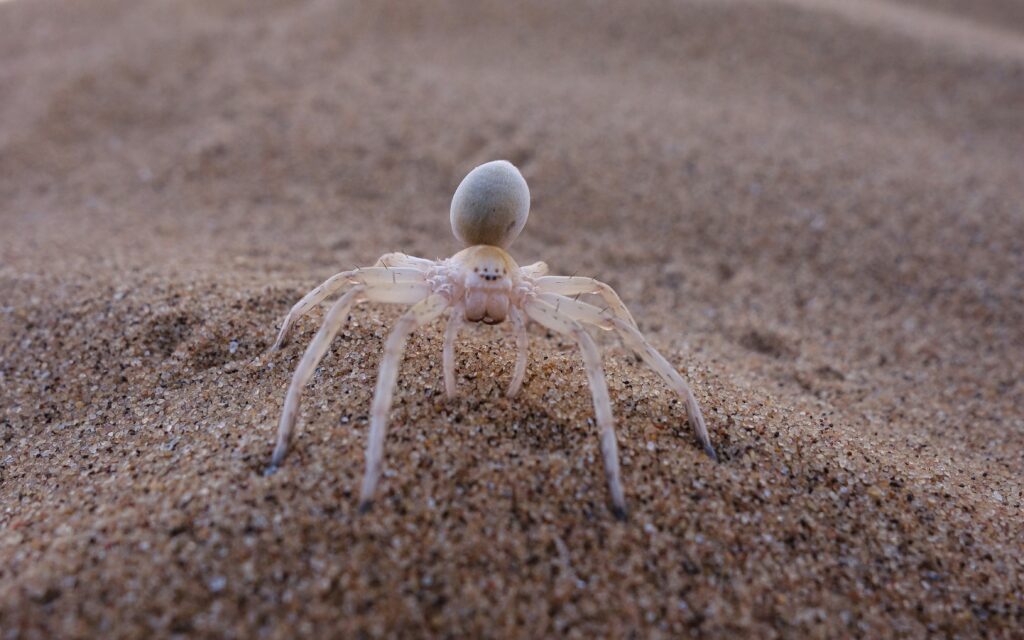
Beyond physical adaptations, non-venomous spiders employ sophisticated behavioral strategies to regulate their body temperature across extreme environments. Desert species often demonstrate temporal niche shifting, becoming nocturnal to avoid daytime heat while exploiting the relatively milder nighttime temperatures for hunting and web-building activities. In cold climates, many spiders engage in solar basking, positioning themselves to maximize exposure to warming sunlight during brief periods of favorable temperature. Burrowing behaviors are common across extreme environments, with spiders digging retreats that provide microhabitats with more stable temperatures than the surrounding environment. Some ingenious species even adjust their web orientation seasonally, positioning orb webs to catch maximum sunlight during cold periods or creating shade structures during intense heat, demonstrating remarkable environmental awareness.
Specialized Water Conservation Methods

Non-venomous spiders in arid environments have developed extraordinary water conservation techniques beyond basic physiological adaptations. Some desert species have evolved specialized setae (hair-like structures) that capture moisture from morning dew or fog, directing it toward the spider’s mouth parts—essentially harvesting atmospheric water. Their excretory systems have been refined to produce highly concentrated waste products with minimal water content, conserving precious bodily fluids. Many desert-dwelling spiders recycle water metabolically, breaking down fats and carbohydrates in a process that actually produces water molecules as a byproduct. Perhaps most remarkably, some species can extract atmospheric water vapor directly through their exoskeletons when humidity reaches certain thresholds, allowing them to hydrate even without liquid water sources available.
Web Adaptations for Extreme Environments

The silk-spinning abilities of non-venomous spiders have been modified across extreme habitats to address specific environmental challenges. In hurricane-prone or high-wind environments, orb-weaving spiders construct asymmetrical webs with reinforced anchor lines and modified geometries that distribute force more effectively, reducing catastrophic web failures. Desert-dwelling web builders often incorporate UV-reflective silk strands that reduce solar heating of the web structure, while simultaneously making their traps less visible to prey adapted to bright conditions. In extremely cold environments, some spiders modify their silk chemistry to prevent freezing and maintain elasticity even at sub-zero temperatures. Humid rainforest specialists produce silk with fungicidal properties that resist decomposition in conditions where microorganisms quickly break down most biological materials.
Life Cycle Modifications for Seasonal Extremes
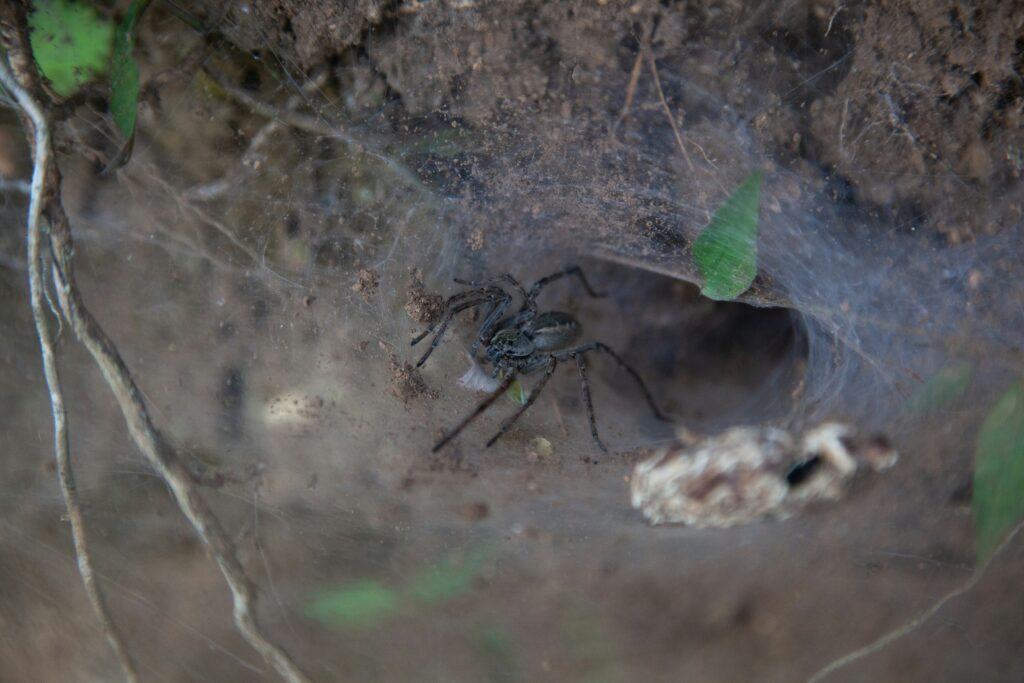
Non-venomous spiders have evolved remarkably tuned life cycles that synchronize with seasonal patterns in extreme environments. Many species in highly seasonal climates compress their reproductive activities into narrow windows of favorable conditions, with accelerated development during brief summer months in polar or alpine regions. Egg-laying strategies vary dramatically, with desert species often producing drought-resistant egg sacs with specialized coatings that prevent desiccation even in extreme heat. Cold-climate spiders frequently demonstrate maternal care behaviors where females guard egg sacs through winter, sometimes generating metabolic heat that prevents freezing. In unpredictable environments, some species employ bet-hedging strategies, with females producing multiple egg sacs with staggered hatching times to ensure that at least some offspring will emerge during favorable conditions.
Predation Strategies in Resource-Scarce Environments
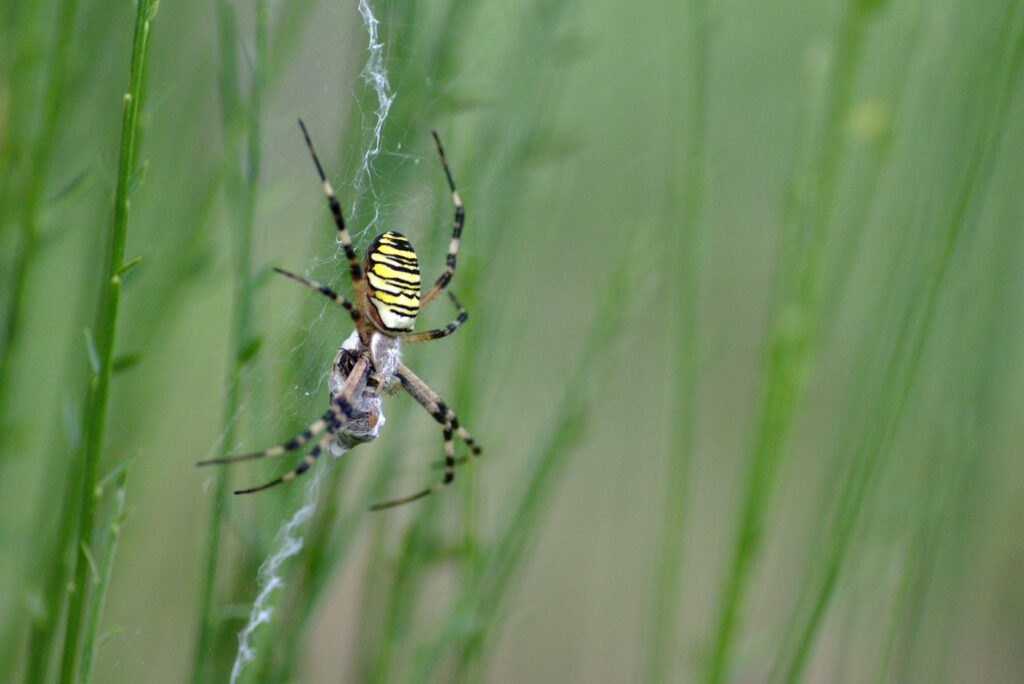
The hunting approaches of non-venomous spiders have evolved specialized adaptations in environments where prey is scarce or unpredictable. Without venom’s hunting advantage, many have developed extraordinary patience and efficiency, with some desert species able to enter states of torpor that reduce metabolic needs by up to 95% during prey shortages. In extreme environments, many non-venomous spiders have evolved toward dietary flexibility, readily switching between prey types as availability fluctuates with changing conditions. Some fascinating species supplement hunting with unexpected food sources—certain desert-dwelling jumping spiders consume plant nectar during prey shortages, while others harvest seeds during lean periods. Cold-climate hunters often develop enhanced sensory capabilities to detect prey at greater distances, maximizing their chance of capturing rare hunting opportunities during brief favorable periods.
Defensive Adaptations Without Venom

Without venomous defenses, spiders in extreme climates have developed alternative protective strategies against predators. Many extreme-environment spiders utilize cryptic coloration that perfectly matches their surroundings, with desert species mirroring sand tones and arctic species developing pale colorations that blend with snow or lichen. Some have evolved specialized setae (hair-like structures) that break off when touched by predators, causing mechanical irritation similar to fiberglass splinters. Behavioral defenses include thanatosis (playing dead), rapid escape movements optimized for their specific terrain, or specialized retreats with emergency exits. Perhaps most impressively, several non-venomous species have evolved to mimic the appearance of dangerous venomous spiders, exploiting predator learning to gain protection without actually possessing toxins.
Social Adaptations in Harsh Conditions

While most spiders are solitary, some non-venomous species in particularly challenging environments have developed various levels of social behavior that enhance survival. In resource-limited environments, certain species form loose aggregations that increase collective prey-capturing efficiency, with multiple webs strategically positioned to maximize hunting success. Some high-altitude and cold-environment spiders engage in communal thermoregulation, clustering together during extreme temperature periods to reduce collective heat loss through decreased surface-area-to-volume ratios. Maternal care is notably enhanced in extreme environments, with extended periods of offspring protection and, in some cases, food provisioning that significantly increases juvenile survival rates. These social adaptations are particularly fascinating as they represent independent evolutionary paths toward cooperation in typically solitary creatures, driven by the intense selection pressures of extreme habitats.
Human Applications from Spider Adaptations

The remarkable environmental adaptations of non-venomous spiders have inspired numerous biomimetic applications in human technology. The water-harvesting capabilities of desert spiders have influenced the development of fog-catching meshes that collect atmospheric moisture in arid regions, providing water for human communities facing scarcity. Spider silk’s extraordinary properties—maintaining flexibility in extreme temperatures—has prompted research into synthetic materials for everything from aerospace applications to medical devices that must function across temperature ranges. The antifreeze compounds produced by cold-climate spiders have informed the development of better cryopreservation techniques for biological samples and organs intended for transplantation. Even architectural designs have drawn inspiration from the thermoregulatory structures built by spiders, incorporating passive cooling and heating principles observed in spider retreats across extreme environments.
Conservation Challenges in a Changing Climate
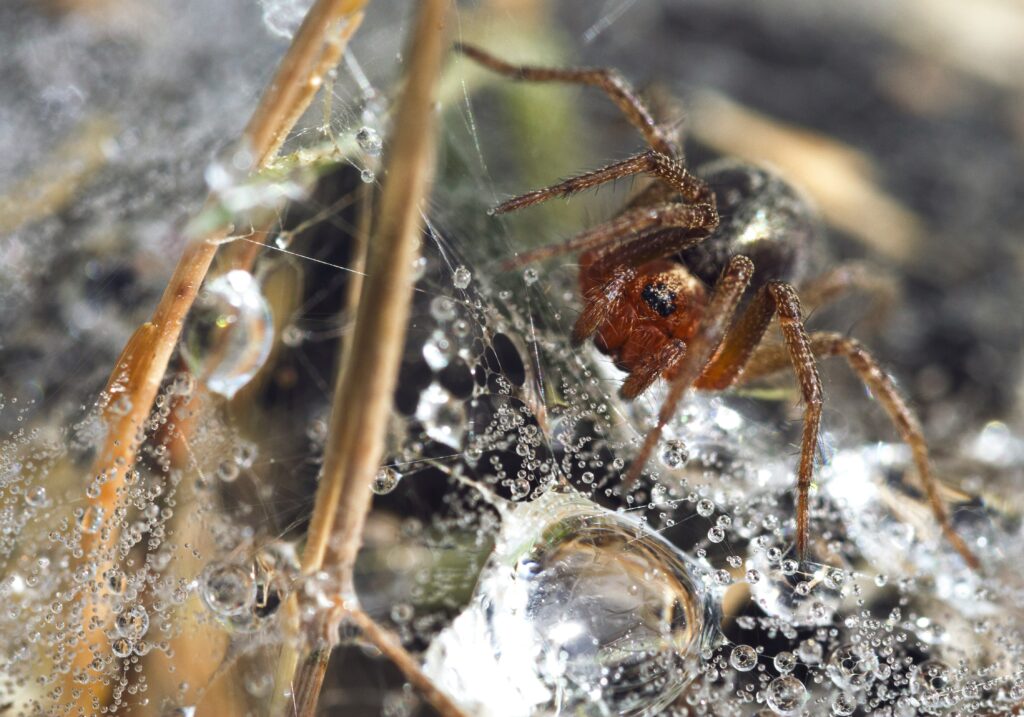
Despite their remarkable adaptability, many non-venomous spider species specialized for extreme environments face unprecedented challenges from climate change. Habitat specialists with narrow temperature tolerances, particularly those in alpine and polar regions, are experiencing range contractions as warming trends eliminate suitable conditions at their historical locations. Desert species adapted to specific rainfall patterns face threats from increasingly unpredictable precipitation extremes that disrupt life cycle timing evolved over millions of years. The accelerated pace of current climate change may exceed the evolutionary capacity of even these highly adaptable creatures, with particular concern for isolated populations with limited genetic diversity. Conservation efforts increasingly focus on identifying and protecting climate refugia—locations where microclimatic conditions might buffer against broader changes—that could preserve these evolutionary marvels and their ecological functions in increasingly unstable environments.
Conclusion
Non-venomous spiders represent some of nature’s most ingenious problem-solvers, demonstrating how evolutionary processes can produce extraordinary adaptations to life’s most challenging circumstances. From the physiological transformations that allow survival in scorching deserts to the biochemical innovations that prevent freezing in arctic conditions, these arachnids have developed solutions to environmental challenges that continue to inspire scientific research and technological innovation. Their success across Earth’s most extreme environments serves as a powerful reminder of life’s remarkable resilience and adaptability. As we face growing environmental uncertainties, the study of how these eight-legged survivors have mastered extreme climates offers not only fascinating biological insights but potential lessons for human adaptation to our own changing world.

